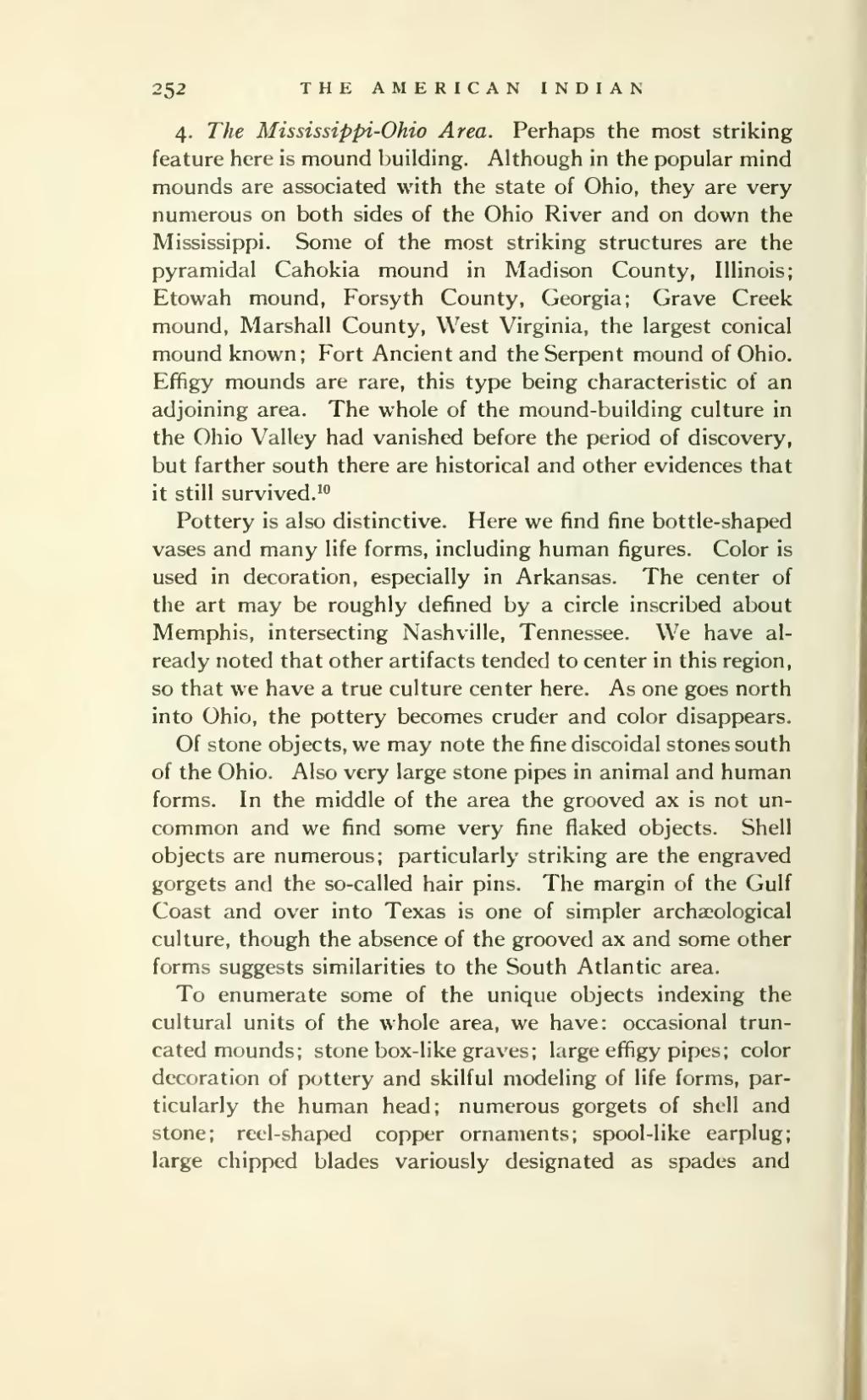4. The Mississippi-Ohio Area. Perhaps the most striking feature here is mound building. Although in the popular mind mounds are associated with the state of Ohio, they are very numerous on both sides of the Ohio River and on down the Mississippi. Some of the most striking structures are the pyramidal Cahokia mound in Madison County, Illinois; Etowah mound, Forsyth County, Georgia; Grave Creek mound, Marshall County, West Virginia, the largest conical mound known; Fort Ancient and the Serpent mound of Ohio. Effigy mounds are rare, this type being characteristic of an adjoining area. The whole of the mound-building culture in the Ohio Valley had vanished before the period of discovery, but farther south there are historical and other evidences that it still survived.[1]
Pottery is also distinctive. Here we find fine bottle-shaped vases and many life forms, including human figures. Color is used in decoration, especially in Arkansas. The center of the art may be roughly defined by a circle inscribed about Memphis, intersecting Nashville, Tennessee. We have already noted that other artifacts tended to center in this region, so that we have a true culture center here. As one goes north into Ohio, the pottery becomes cruder and color disappears.
Of stone objects, we may note the fine discoidal stones south of the Ohio. Also very large stone pipes in animal and human forms. In the middle of the area the grooved ax is not uncommon and we find some very fine flaked objects. Shell objects are numerous; particularly striking are the engraved gorgets and the so-called hair pins. The margin of the Gulf Coast and over into Texas is one of simpler archæological culture, though the absence of the grooved ax and some other forms suggests similarities to the South Atlantic area.
To enumerate some of the unique objects indexing the cultural units of the whole area, we have: occasional truncated mounds; stone box-like graves; large effigy pipes; color decoration of pottery and skilful modeling of life forms, particularly the human head; numerous gorgets of shell and stone; reel-shaped copper ornaments; spool-like earplug; large chipped blades variously designated as spades and
- ↑ Thomas, 1889. I.
